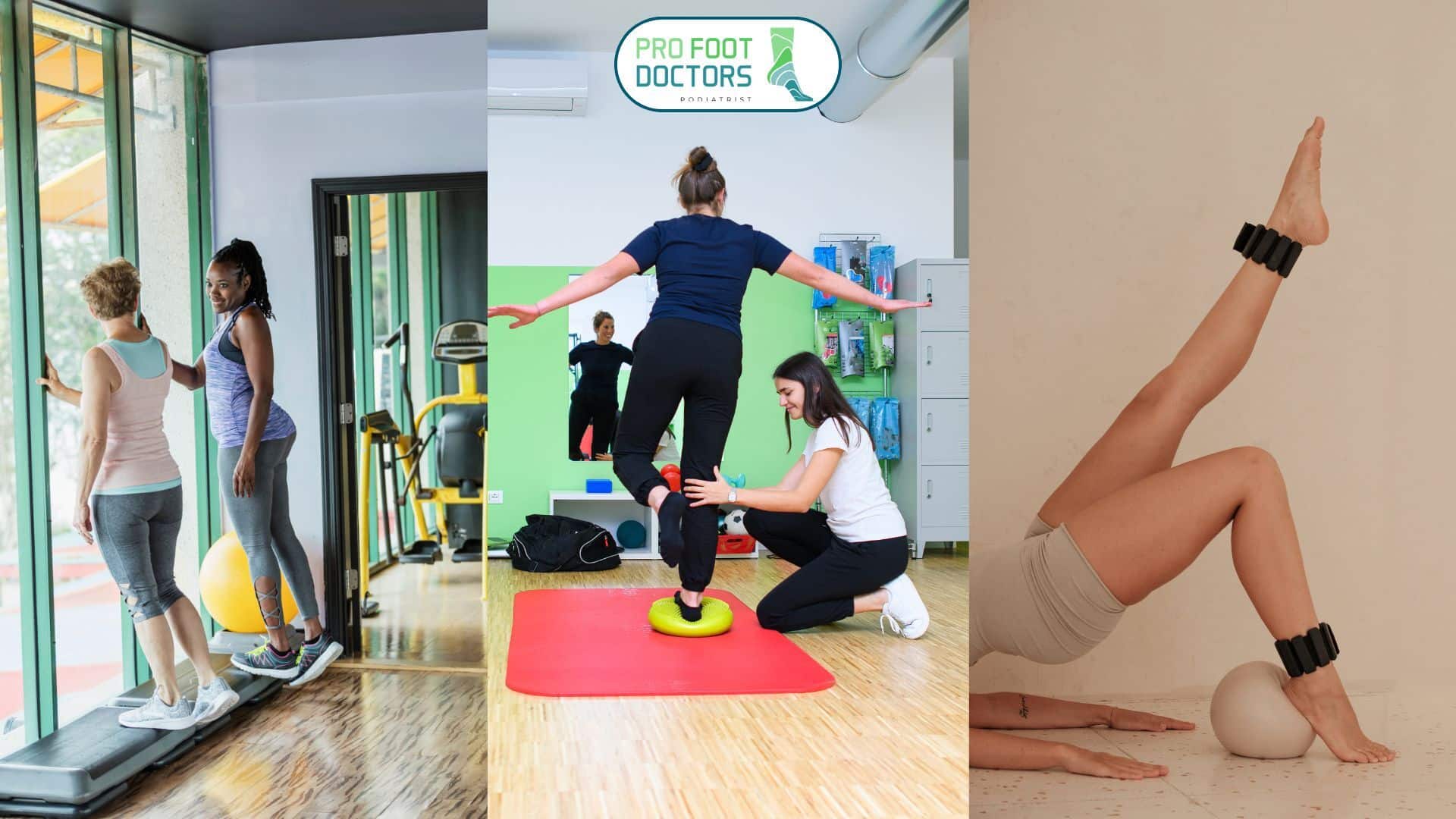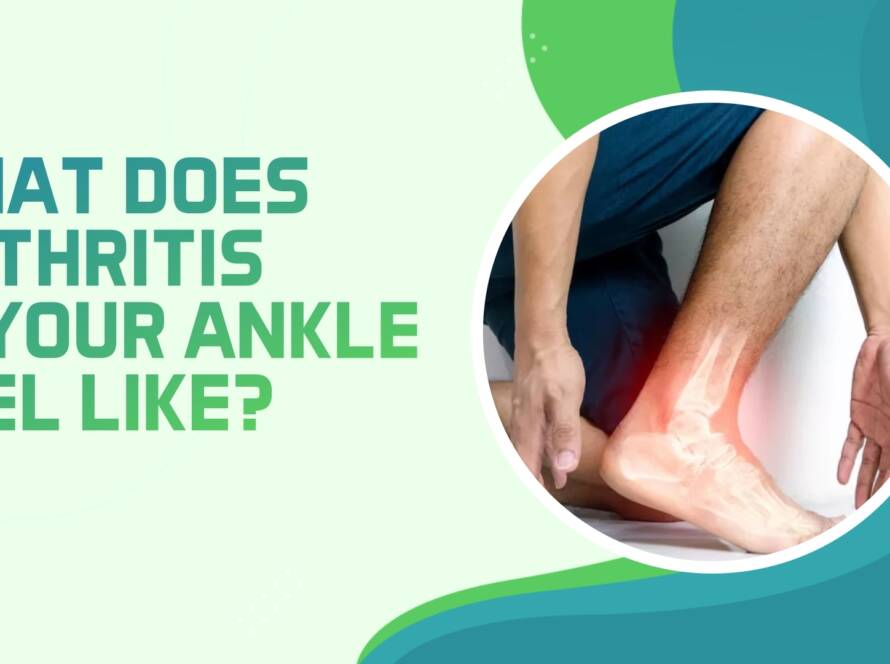Limited mobility, frequent episodes of ankle sprains, and improper balance are common signs of weak ankles. Your ankle is one of the robust joints that consist of tendons, ligaments, and muscles—all of which support smooth movement. However, sudden twisting and turning of the ankle can cause a sprain. And if it gets injured frequently, the muscles surrounding it will weaken over time.
If you’ve sustained an ankle injury or are recovering from a sprained ankle, you might wonder how ankle-strengthening exercises can help. Let’s explore some common reasons why experts often recommend exercises to strengthen your ankle, improve its function, prevent future injuries, and restore your normal range of motion.
Why You Need Ankle-Strengthening Exercises
Your ankle joints can indirectly affect the joints in your knees and hips. If the base is not strong enough to be stable and offer seamless mobility, it might make your other joints weaker, too. This can make it difficult to move, lift weights, or practice any activity involving your lower limb.
Get Relief From Pain
Pain is your body’s natural response to an injury. It is sometimes accompanied by swelling, which can get worse and restrict your movements significantly. If your ankles seem unusually puffy, you must try drawing the alphabet with your toe. This simple ankle exercise can help manage pain and swelling and ease the feeling of stiffness. The main purpose of indulging in ankle mobility exercises is to strengthen the muscles around your ankle and provide support to the tendons and ligaments.
Improved Blood Circulation
There’s a common misconception that resting your ankles and avoiding movement can help them heal faster. The truth is that moving can increase blood circulation to the injured site, eventually speeding up your recovery. Blood carries oxygen and all the vital nutrients your ankle requires to heal.
Try this simple exercise: Lie down comfortably and move your toes up and down. Repeat it multiple times. It’s called an ankle pump and is quite effective at healing your damaged tissues while reducing swelling. Improved blood flow also makes your injured site less heavy and painful.

Help Restore Your Normal Range of Motion
Ankle injuries can significantly restrict movement. The stiffness combined with swelling can make even the simplest tasks, like standing, difficult. Light stretching and other ankle-strengthening exercises can improve flexibility in your joints, helping restore your normal range of motion. Not moving your ankles, assuming it will put unnecessary pressure on your joints, might further escalate the problem.
Limited ankle movements will strain your other joints, such as those of your knees and hips, as you might move them the way they aren’t supposed to move. So, an important part of a healthy recovery plan is keeping your foot mobile. That said, do not indulge in strenuous or high-intensity workout sessions. Always check with your doctor, like those at Pro Foot Doctors, before starting ankle exercises.
Improve Joint Stability
You need to build stability in your joints to not only avoid complications after an injury but also prevent future injuries due to weakened joints. If you limit your movements, the ligaments, tendons, and other structures that support your ankle’s function will weaken over time due to lack of movement.
Keeping the ankle mobile will improve joint flexibility while building strength. Practicing exercises and stretching regularly will strengthen your ankles, improve stability, and make it easier for you to move easily. Improved stability is also linked to better balance, as ankles that are stable enough to support all kinds of movements are less likely to twist or turn unexpectedly. You are also less likely to trip due to weak ankles.

Avoid Stiffness
If you have had braces for days or even weeks after an ankle injury, you must have noticed how stiff your ankle felt when you started moving again. Returning to your routine physical activities is easier when you don’t restrict your movements. Keeping the affected area immobile for a long time can cause long-term stiffness, which can make your ankle unstable and movements difficult. On the other hand, gentle movements will prevent excessive scar tissue formation on the injured site. To keep your ankles functional, smooth, and easy to move, it’s important to keep them mobile.
Allow You to Return to Your Normal Activities Soon
Limited range of motion, specifically in the ankle, can make your daily tasks challenging. This gets worse for athletes or those involved in activities that require good ankle strength. Without movements, stiffness might persist, making your tendons and surrounding structures weak.
Activities like jumping, running, or sports require stable, flexible, and strong ankles. While injury might make movements painful initially, not moving the ankle at all won’t fix it. It will rather cause long-term stiffness and place you at an increased risk of future injuries. Mobility exercises can strengthen your ankles, helping you get back to your routine tasks confidently.
Best Ankle Strengthening Exercises
Here are some basic yet beneficial ankle-strengthening exercises you must try at home:
- Calf Raises: Stand on a surface with your feet placed on the ground hip-width apart. Raise your toes so that your heels get off the ground. Hold this position for a few seconds, then get your feet back down.
- Ankle Alphabet: Lie on your back and draw the alphabet in the air using your toe. This exercise will enhance muscle strength and flexibility.
- Ankle Circle: Lie on your back and rotate your ankle in a circular motion. Do it 5-10 times clockwise and then anticlockwise.

Bottom Line
Towel curls, calf raises, ankle alphabet, standing heel raises, golf ball rolls and toe pulls are not just light stretching exercises, but their benefits go beyond your ankle. They improve the strength and stability of your lower limb, making movements less painful and more comfortable.
Over time, you will feel more confident about walking, standing, running, jumping, and practicing other physical exercises that require your full range of motion. Talk to your therapist about safe exercises you can practice while recovering from an ankle injury. They will help create a personalized mobility plan that can speed up your healing.


